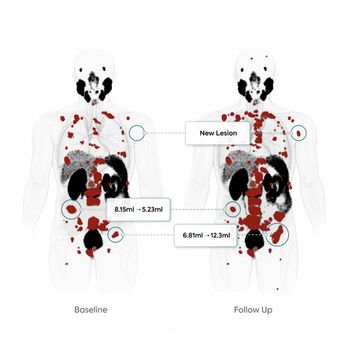
CT colonography screening trial seeks definitive answers
The American College of Radiology Imaging Network has begun enrollment nationwide for its national CT colonography trial. The study should resolve ongoing debate over the efficacy of virtual colonoscopy for cancer screening.
The American College of Radiology Imaging Network has begun enrollment nationwide for its national CT colonography trial. The study should resolve ongoing debate over the efficacy of virtual colonoscopy for cancer screening.
Touted as the world's largest virtual colonoscopy study, ACRIN 6664 is projected to enroll more than 2300 patients at 15 sites across the U.S. during a one-year accrual period.
"With so much conflicting data regarding the performance of CT colonography in a screening environment, another large multicenter study needed to be done in the right way," said principal investigator Dr. C. Daniel Johnson, a professor of radiology at the Mayo Clinic in Rochester.
Two previously published large multisite trials came to opposing conclusions on the value of CT colonography. Researchers at the Medical University of South Carolina, led by Dr. Peter B. Cotton, director of the Digestive Disease Center, conducted a nonrandomized, evaluator-blinded study with 615 participants. They found virtual colonoscopy to be significantly less sensitive than conventional colonoscopy and not ready for mainstream clinical use (JAMA 2004;291[14]:1713-1719).
A Department of Defense study published by Dr. Perry J. Pickhardt, now an associate professor of radiology at the University of Wisconsin, Madison, however, reported that virtual colonoscopy detected more than 90% of significant polyps in 1233 asymptomatic patients, including 92.6% of polyps 8 mm or larger. Conventional colonoscopy detected 89.5% of such polyps (NEJM 2003;349[23]:2191-2200).
In the new ACRIN trial, every case will be read using both 2D and 3D primary read protocols so that investigators can learn how well each technique performs alone as well as combined. This is one of several protocol areas that differentiates the ACRIN trial from the Cotton trial, which relied on 2D primary reads, and the Pickhardt trial, which used only 3D primary reads.
"We'll also be using the latest imaging technology. Every site will be using 16-slice or higher scanners," Johnson said.
All readers participating in the study will train for a day, reading about 35 exams. Readers will then be tested and given additional training if needed over a day and half, reading another 35 exams.
The study, which has a primary aim of validating the widespread use of CT colonography in colon cancer screening, has a large number of secondary aims as well, according to Johnson. These address interobserver variability, the importance of flat lesions and extracolonic findings, reader preferences, a database for computer-aided detection, and patient acceptance.
"This is really a very large study with a number of aims. We hope to be able to finally answer the remaining questions surrounding CT colonography screening," Johnson said.
For more information from the online Diagnostic Imaging archives:
Newsletter
Stay at the forefront of radiology with the Diagnostic Imaging newsletter, delivering the latest news, clinical insights, and imaging advancements for today’s radiologists.



























